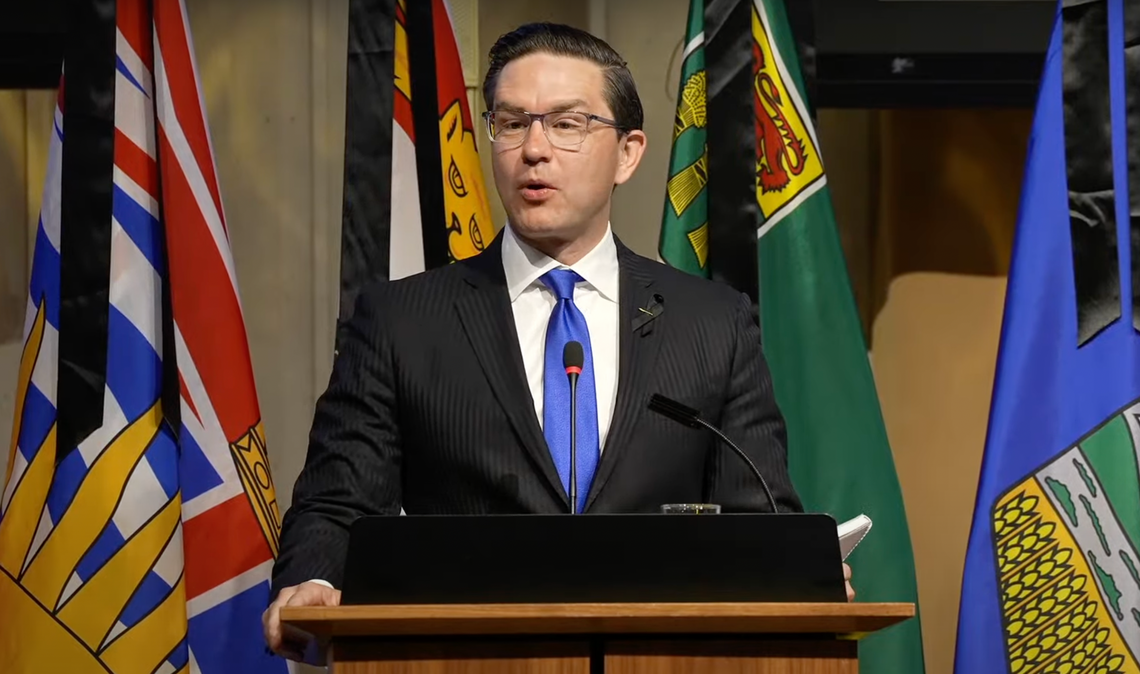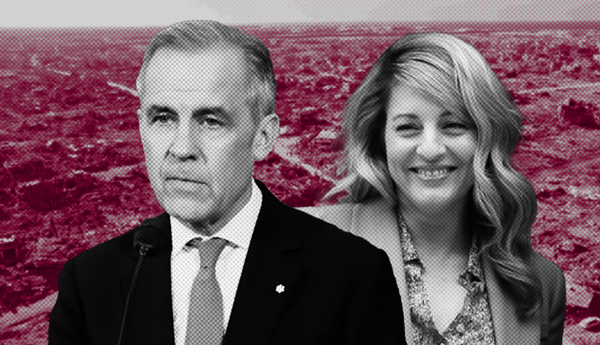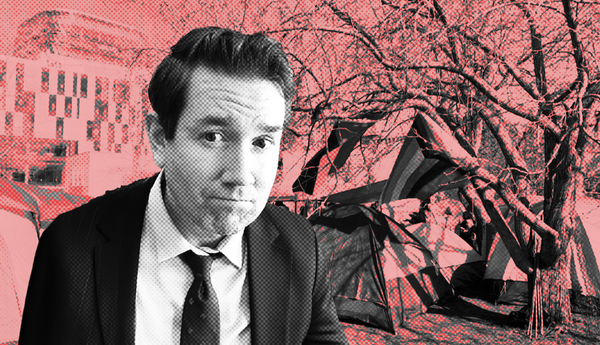This month, teachers and students return to classrooms with fewer COVID protections than at any time during the pandemic. Debates have raged about the best way to prevent the spread of COVID in schools, but a key part of the education system is often left out of these discussions: Child care.
Throughout the pandemic, child care workers have been treated as an afterthought, simultaneously heralded as essential workers while being given few tools to keep themselves safe.
For Nina Monahan, who manages a preschool in Vancouver’s Dunbar neighbourhood, the message that B.C. government officials are sending to child care workers is frustratingly familiar.
“So we are an essential service, but we're not essential workers,” she said. “It's coming back to the same message over and over and over again: That the service itself is essential and the bodies who do it … kind of don't matter.”
With a new school year and new COVID variants, will anything change?
Two Years of Being Left Behind
At the start of the pandemic in March 2020, child care workers had a roster of concerns to confront with no overarching institutional structure to guide them. What kind of sanitizer is best? How often should toys and frequently touched surfaces be cleaned? To mask or not to mask? Can kids even get COVID? If they do, will they be ok? These were just some of the unanswered questions at the time.
How child care centres responded to the first few months of the pandemic in the spring of 2020 varied across B.C. Some centres stayed open with slightly altered service and new pandemic precautions, while others shuttered until the fall.
Research into the child care workforce from the Social Research and Development Corporation and Early Childhood Educators of B.C. (ECEBC) published in May 2021 showed that concerns about the health and safety of children and staff, lower enrolment, and difficulties finding workers were some of the main reasons centres closed.
Emily Gawlick, executive director of ECEBC, a professional organization that represents child care workers, explained that child care centres across the province had to “juggle their own safety while they made policies and procedures, because each program would have had to do that on an individual basis.”
Gawlick said the child care sector lacks the organizational infrastructure of sectors like health care and K to 12 education. While public schools were able to close at the beginning of the pandemic in order to create safety guidelines and make funding available for COVID safety measures, child care operators had to figure things out on their own.
In B.C., child care workers were initially also left out of pandemic aid programs. In May 2020, child care workers were not eligible for the first round of “pandemic pay,” a provincial program that provided an extra $4 per hour for “health and social service workers delivering in-person, front-line care to some of B.C.’s most vulnerable people.”
Kelsi Barkved worked in a child care centre at an elementary school in Prince Rupert. Although her centre had closed for the first six months of the pandemic, She worked steadily after the centre re-opened in fall 2020. Barkved took COVID precautions seriously, monitoring herself for symptoms, and calling in sick and getting tested whenever she had a runny nose or sore throat.
Barkved had worked in the field for five years and said she was still making under $20 an hour. In B.C., early childhood educators working in licensed centres make on average $25,200 a year, less than half the average annual income of all other workers in the province. Low wages, lack of job benefits and overwhelming workloads have created a decades-long worker retention crisis in the sector.
Barkved said identifying herself as a child care worker when asked whether she was an essential worker by the COVID testing centre staff only expedited her results once. At that point, taking a day off whenever the slightest hint of a COVID symptom emerged meant giving up a sorely needed day’s pay.
Though Barkved said her employer provides seven paid sick days per year, the length of time it took to get her results, typically two to three days, meant Barkved quickly used up her allotted sick days.
At the end of December 2021, the emergence of the highly contagious Omicron variant caused COVID cases to skyrocket. In B.C., the provincial government decided to delay the return of in-person classes for the public school system by a week, in order to “allow schools to implement enhanced safety measures and proactively implement continuity of learning plans.”
Parents who had planned for their kids to return to elementary school on Jan. 4 were consequently requesting all-day child care to cover the extra week of the winter break. Early childhood educators described having to cobble together an extra week-long “winter camp” curriculum at the last minute.
Because of the low wages in child care, many educators and assistants work second jobs outside of the field, making sudden schedule changes even more challenging.
In an open letter published by Gawlick on Jan. 11, ECEBC alleged that the decision to delay the return of in-person classes on such short notice “blatantly neglected” child care, and was another missed “opportunity to recognize the simultaneous impacts” on the sector.
The letter urged a more collaborative approach to pandemic management in child care and public schools, as well as priority access to booster shots, rapid tests, PCR testing and protective equipment, including N95 masks, for child care workers.
Updated public health guidance specific to child care didn’t arrive until Jan. 19. It advised that children and staff who had been exposed to COVID “may continue to attend child care, regardless of vaccination status, unless they develop symptoms and/or test positive for COVID-19.” The guidelines acknowledged that “many staff and children will not be eligible for COVID-19 testing.”
Barkved was shocked to hear that children and staff who had been exposed to COVID could still come into her centre. Given the close proximity child care workers have with kids, she felt the new guidance ignored the risks child care workers are forced to take.
“When was the last time anyone from the ministry was actually full day, eight hours or ten hours, in a daycare, face to face with a child or face to face with a toddler?,” she wondered.
In response to outcry from the sector, the Ministry of Children and Family Development announced a virtual town hall meeting with public health authorities on Jan. 26, to "address questions that have arisen from child care providers and parents.”
Hours before the town hall began, the government announced that 250,000 rapid tests would be distributed to licensed child care centres.
In the meeting, officials did not acknowledge the frustration caused by the delay in the return for K to 12 students, merely stating that they were aware that it had been “challenging” to keep up with the changes. Gawlick’s letter was not directly addressed.
Mark Lysyshyn, deputy chief medical health officer for Vancouver Coastal Health, claimed during the meeting that “kids are less likely to get COVID,” and that “they’re less likely to transmit COVID.”
Transmission of COVID in child care facilities and public schools, both child-to-child and child-to-adult, is well documented. While some studies have found household adults are at a higher risk of contracting COVID from kids than adults in non-household settings, there are concerns that younger children may actually have a greater risk of transmitting COVID to their caregivers than older children.
According to WorkSafeBC, the education sector has the second-highest number of COVID claims, behind health care and social services. Early childhood educators are in the top 20 occupations in terms of the number of COVID claims, with 86 per cent of their claims accepted by WorkSafe BC.
Increases in pediatric hospitalizations due to COVID were documented across the United States and Canada. Weekly COVID-19 reports from the BC Centre for Disease Control showed COVID cases in the four-and-under and five-to-nine age groups increasing during the Omicron wave.
The risks to immunocompromised staff were addressed once during the January MCFD town hall meeting, with B.C.’s provincial health officer, Dr. Bonnie Henry, advising that immunocompromised people will be protected so long as they are vaccinated and wear a mask at work. Long COVID was not addressed at all.
The impacts of Long COVID differ from person to person. Symptoms can include heart palpitations, extreme fatigue, brain fog, insomnia, joint and muscle pain, and sore throat. These symptoms have been documented in children, adolescents and adults.
Research into Long COVID shows that it is already taking millions of workers out of the workforce across the continent. Like other post-viral syndromes, Long COVID impacts women more significantly than men. Ninety-six per cent of the child care workforce in B.C. is female.
The virtual town hall meeting did not include any representation from workers in the child care sector. Meeting participants could submit written questions via a Q&A box, but were not permitted to use their microphones to ask questions. Only questions accepted by the public health representatives running the meeting were viewable to participants.
Barkved felt as though child care workers hadn’t actually been invited to the table. She was left wondering if things would be any better going forward.
“How are you going to ensure in the future that you don't forget us again? Because we're not out of the woods,” she said a few days after the meeting.
Calls for More Support, Better Protections
In February, the B.C. NDP fulfilled a long-standing promise to move the child care sector from the Ministry of Child and Family Development to the Ministry of Education. A letter from the Minister of Education, Jennifer Whiteside, and the Minister of State for Child Care, Katrina Chen, indicated that the move would result in more child care centres on public school grounds. However, child care centres will not be governed by school boards.
Sue Irwin, director of programs and operations for ECEBC, said “Now that we're in the Ministry of Education and Child Care, we are advocating and communicating that we feel any guidelines and communications should be coordinated between the childcare sector and the K to 12, and released at the same time.”
On Aug. 25, guidance for the child care sector was included along with guidance for public schools. The guidance reiterated that as independent organizations, “child care providers are responsible for implementing their own health and safety policies to suit the needs of staff, children and families.”
Aside from vaccination, COVID safety guidance on the B.C. Centre for Disease Control website stresses that children, staff and parents should stay home when sick.
However, amid high levels of inflation and without pandemic financial supports, many workers and working parents who rely on child care are unable to simply stay home when sick.
Earlier this year, the B.C. government introduced legislation that provides workers with five paid sick days. However, many people infected with COVID remain infectious and/or symptomatic for more than five days.
As of July 2022, all of the federal and provincial programs designed to support workers who need to take time off while sick with COVID – including the Canada Recovery Sickness Benefit, Canada Worker Lockdown Benefit, Canada Recovery Benefit and the BC COVID-19 paid sick leave – had ended.
As is the case in public schools, masking is a “personal choice” in child care, even when individuals are experiencing respiratory symptoms.
Karina Zeidler, a family physician and a founding member of the public health advocacy group Protect Our Province BC, said the vulnerability of those in the child care system underscores the need for multiple layers of protection.
“We want to have as many things as possible so that if one thing breaks down, we have the backup of other things,” said Zeidler.
Zeidler is also running for Vancouver School Board in the upcoming local election on a platform promising to reinstate masking and other protective measures in public schools.
While this mandate would not extend to child care centres, Zeidler would like to see child care workers masking, as well as updates to ventilation systems, the use of CO2 monitors to track how well those ventilation systems clean the air, and more time spent doing activities outdoors where COVID risk is considerably lower.
“We don't really know what's going on in childcare centres in terms of transmissibility and how many kids are sick,” said Zeidler. “It's easy to say that something is not happening somewhere when you're not looking for it.”
Looking ahead at the upcoming school year, Monahan said she is already exhausted at the thought of having to manage the risk of illness again, whether it be COVID or other viruses that she said have made a major comeback since masking regulations eased and people started socializing more.
“Having staff be off sick was our biggest hurdle,” Monahan explained. “It meant a lot of uncertainty, so that was an extra mental load for us.”
While Monahan is grateful for the investments in child care made by the federal and provincial governments in recent years, she thinks their largely reactive approach to child care worker safety reflects the fact that they still see child care as an economic initiative first and foremost.
“I don't think we've made any progress in terms of people thinking about child care and early childhood centres in the same way as schools,” said Monahan. “They don’t think of them as places that children need to go to, or deserve to go to. They’re places that people take their children so they can go to work.”
Emma Arkell (she/her) is a multimedia journalist based in Vancouver. Her work focuses on labour, social movements and cities, and can be found in PressProgress, Briarpatch and elsewhere.
Go deeper
Here are a few stories from our archive that expand on today's story
Lifting Mask Mandates Risks ‘Disastrous’ Impact on Public Health, Critics Warn
Doug Ford’s Conservative government lifted most of its indoor mask mandates in Ontario earlier this year. In the March 9 press conference announcing the change, Chief Medical Officer Dr. Kieran Moore said: “We are now learning to live with and manage COVID-19 for the long term.”
Costs of Living Continue to Rise as Workers Lose Real Wage Gains
The July Consumer Price Index (CPI) update published by Statistics Canada showed that costs of living in Canada continued to increase in June, with inflation rising 8.1 per cent year over year.
Top Maple story this week
What Does Pierre Poilievre’s Conservative Leadership Mean for Canada?

Pierre Poilievre’s landslide victory in the Conservative Party leadership race last weekend has prompted words of warning and criticism from some progressive political watchers.
Catch up on our latest stories
- Fighting for Worker Rights in a Tight Labour Market.
- Officials Warned Canada’s Pro-Israel Voting Record Not Based on ‘Merit': Report.
- Canadian Government No Longer Denies Ukraine Arms Shipments Have Ended Up in Azov Hands.







